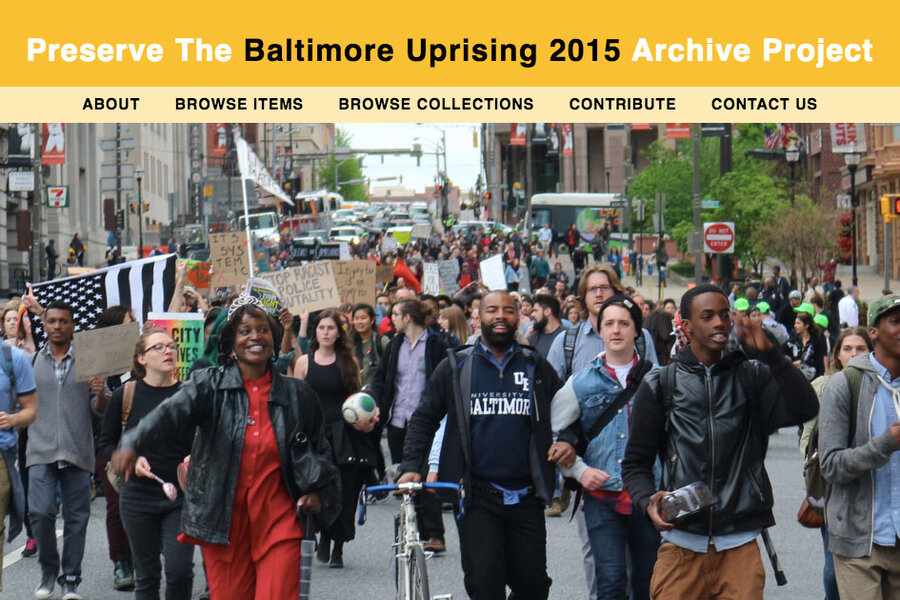Digital archive of Freddie Gray protests gives Baltimoreans a voice in history
In an effort to capture a range of citizen voices for posterity, the Maryland Historical Society is releasing a database of user-submitted photos, oral histories, and videos from the unrest that followed the death of Freddie Gray in Baltimore last year.
On Thursday, the society announced the launch of the website, baltimoreuprising2015.org, which offers a searchable database of thousands of videos, photos, oral accounts, and written documents that provide a look at a range of perspectives from the unrest following Mr. Gray’s death in police custody last April.
"It is crucial to gather and preserve as many perspectives and experiences of protest and unrest as possible," the society's website says. "Too often, history is shaped by official accounts. When the history of the Baltimore Uprising of 2015 is written, we want to make sure it can include voices from the streets as well as voices from the halls of government."
The website's launch mirrors a growing trend of pushing for a re-examination of historical events around America's history with race and racism, including an exhibit launched by Princeton University that reconsiders the legacy of Woodrow Wilson in terms of views on race and a move by several universities to acknowledge their ties to slavery.
But the inclusion of a variety of citizen voices in the historical society's online archive has been notably enhanced by the growing use of technology to document events – including unfolding protests – as they occur, often creating a parallel narrative to the one generated by mainstream media outlets.
Documents in the society's archive consciously address the desire to push for an alternative narrative. A series of oral history interviews by local nonprofit Wide Youth Media, for example, asked young Baltimore residents at the protests what they would tell people outside the city.
"The whole city is not in flames like the media is making it look and the riots was just one day," said 18-year-old Mikiah in a May 2015 interview. "It wasn't all about Freddie Gray, he was just like the tipping point. And I just want people to know that Baltimore is a great city."
In contrast to media portrayals of the protests in Baltimore as violent, many documents reveal a sense of hope and a desire to reform the city's policies as an overwhelming motivation for residents. "It’s gonna get better, as long we doing the protests it's gonna get better," 15-year-old Jabril Williams said in a Wide Angle Youth Media interview.
Joe Tropea, the society's digital project coordinator, told the Associated Press that cellphone photography and social media have made it increasingly possible for a growing number of people to chronicle historic events themselves and preserve them for future generations.
The society is planning a video installation of the images, which will open at its headquarters in Baltimore in late June.





